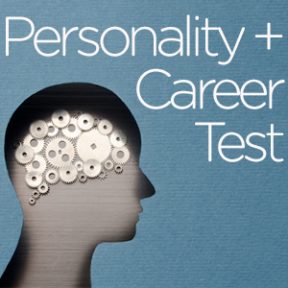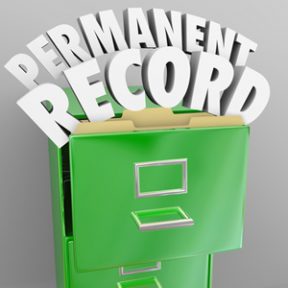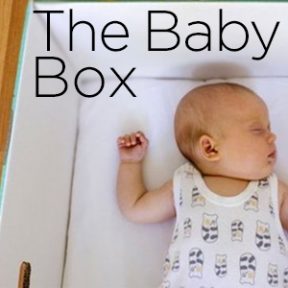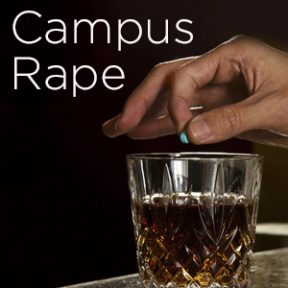 I use a combination of personality and career tests to guide my clients as they begin the journey to select their colleges, majors, and future careers.
I use a combination of personality and career tests to guide my clients as they begin the journey to select their colleges, majors, and future careers.
While this may sound like a lofty task – and impossible goal – when my clients are 17 and 18 years old, I’m struck by how accurate these tests sum up their personalities, motivation, organizational skills, and confidence.
Sometimes it’s difficult to get a sense for how students use their time or how they work in small groups. These tests help me cut to the chase so I can efficiently explore career options with them.
If you’ve never taken a personality test, try the Myers Briggs test. This is a truncated version of their full battery of tests but it will give you a general idea about your personality type.
Remember, I use a combination of tests to do a comprehensive analysis – the online tests are just for fun, so don’t take them too seriously!
 I use a combination of personality and career tests to guide my clients as they begin the journey to select their colleges, majors, and future careers.
I use a combination of personality and career tests to guide my clients as they begin the journey to select their colleges, majors, and future careers.
While this may sound like a lofty task – and impossible goal – when my clients are 17 and 18 years old, I’m struck by how accurate these tests sum up their personalities, motivation, organizational skills, and confidence.
Sometimes it’s difficult to get a sense for how students use their time or how they work in small groups. These tests help me cut to the chase so I can efficiently explore career options with them.
If you’ve never taken a personality test, try the Myers Briggs test. This is a truncated version of their full battery of tests but it will give you a general idea about your personality type.
Remember, I use a combination of tests to do a comprehensive analysis – the online tests are just for fun, so don’t take them too seriously!
 …But you’ll never believe what they did…
…But you’ll never believe what they did…
I thought it would be entertaining to take our new international student to see a Giants game, after all, it IS America’s favorite pastime, right?
To ensure that it would be a wonderful experience for her, I invited a couple of teens to join the fun. I thought it was a good plan. I was thrilled when the Giants’ first at bat was a homerun right out of the stadium. I couldn’t have planned a better introduction to baseball fever. Then, the second at bat hit another homerun. Wow! The kids were clapping and really into it and I was mentally patting myself on the back for orchestrating this cool cultural experience for the kids.
But then all three of them pulled out their cell phones and nothing could pull them away. They played video games together, made funny images using their photos, and shared Snapchat photos that they thought were hilarious.
At one point, one of them popped their heads up to read the scoreboard and said, “Oh, we’re winning again!” and then went right back to playing on their phones. The only time they stopped playing games was when they went to buy Ghirardelli ice cream and hot chocolates.
They claim to have had a great time at the game but I think we could have accomplished the same cultural experience in front of a TV – and saved a few hundred dollars!
 Before your college-bound high school grads indulge in summer relaxation, make sure they ask their high school guidance counselors to send their final transcripts to their colleges.
Before your college-bound high school grads indulge in summer relaxation, make sure they ask their high school guidance counselors to send their final transcripts to their colleges.
Most counselors head off for summer vacations a few weeks after school is out so do this now. Colleges need confirmation that students have successfully graduated with no grades below a C-. The counselors are responsible for sending the transcripts but sometimes they don’t know which colleges your kids will be attending in the fall.
Avoid 11th-hour crises of needing transcripts from counselors who are out of the office until August by talking to the counselors now. Most colleges need the transcripts by July 15th, but some are now requesting them by July 1st.
If your grad received grades lower than C-, they will need to contact their colleges now to give them a heads up. Each college has their own policies on grades below a C- so check first, and then place the call or write an email. It’s best to have this discussion with the college BEFORE they receive their transcripts. Most likely, the student will be placed on probation for the first term. If they have received scholarships, contact financial aid to make sure that scholarship dollars are not withdrawn.
Congratulations on your kids’ graduations!
 If you’re heading off to college, take a few hours to research the many opportunities ahead so you can take full advantage of your college experience.
If you’re heading off to college, take a few hours to research the many opportunities ahead so you can take full advantage of your college experience.
Check out the tips I wrote in “Why Laying out a 4-Year Plan is Essential.”
For those of you searching for a good and meaningful gift for a high school grad, read my blog “The Best Graduation Gift is a GOOD PLAN.”
Make the most of your summer and be prepared for college!
 High school students, and their parents, stress out about their grade point averages (GPAs). Fact. But, why? Because colleges consider GPAs to be the single most important factor in making admission decisions. Makes sense, right? But the criteria by which these high school teachers use to determine these grades vastly differs from school to school. That’s unfair.
High school students, and their parents, stress out about their grade point averages (GPAs). Fact. But, why? Because colleges consider GPAs to be the single most important factor in making admission decisions. Makes sense, right? But the criteria by which these high school teachers use to determine these grades vastly differs from school to school. That’s unfair.
As a college advisor, I meet with students across the United States, so I see a wide variety of grading rubrics and final grades. Even the schools that seem to be transparent about how grades are determined because they publish a detailed rubric at the start of the school year still have variances that may seem sketchy.
Some teachers dock points for each day an assignment is turned in late, while others will allow a pile of late work to be turned in the day before the grading period ends. Hmm. Others allow students to retake exams that they fail or let them drop the lowest test scores to improve their grades. Many give extra credit points for ridiculous things like bringing treats to class or going on field trips.
Over the years I’ve seen some doozies. One student took a 3-week summer history class where the teacher told him he didn’t need to attend the actual classes. Really! He just needed to show up on the last day of the summer program with all of his completed assignments. This student gathered up notes from a previous history class that he had failed and turned them into his summer teacher for credit. The shocker was that the teacher gave this student an A in the history class – he obviously didn’t look at the pile of papers. But the ridiculous part of this story is that the teacher actually replaced this student’s previous F’s in the fall and spring semesters with A’s! How is this fair to the other thousands of students who suffer from reduced GPAs when they fail a class?
To get students to actually take state mandated standardized tests each year, teachers and administrators have bribed students to do well on the tests by offering a full-letter bump in their final grade if they score at a specific percentage on the standardized tests. In other words, if the student gets an 80% in the chemistry section of a standardized test, this chemistry teacher would bump the student’s final grade by one letter grade. Say what?
On the other end of the spectrum, I’ve seen a teacher not budge when a student received an 89.99% and gave him a B+. This actually happened to one of my clients, who was a straight-A student until he got this single B+ in Chemistry. The student asked the teacher if he could do extra credit, write an essay or do anything to bump his grade to an A so he could become the class valedictorian during his senior year. Sadly, the teacher wouldn’t budge, and even though the student reached out to the principal and superintendent of schools, the teacher refused to change his grade.
When teachers use unethical grading practices to help their students improve their GPAs or to gain high scores on standardized tests (which reflect well on the teacher), that ruins the value of GPAs for everyone. College admissions officers are savvy to schools with substandard curriculum but they aren’t always aware of grading practices of particular teachers. Seems to me that there should be more transparency about actual grading rubrics and policies on Rate My Teacher so colleges get a realistic view of student achievement in classes.
 As the sole superpower in the world, I would hope that America would lead the way in preventing continued, and worsening, rising temperatures caused by man-made releases of CO2.
As the sole superpower in the world, I would hope that America would lead the way in preventing continued, and worsening, rising temperatures caused by man-made releases of CO2.
It seems like social media is the only real way to reach people with news that will directly affect them. The oligarchy that runs this nation certainly doesn’t allow the press to honestly state the scary facts about climate change.
I read an abstract recently and feel more than ever that our next president of the United States needs to lead us out of this impending path of destruction. Greenland’s ice sheet is melting, and it’s feeding on itself. This is the positive feedback loop that I blogged about in “Do Your Part for Earth Day: Don’t Drive Tomorrow!”
I can’t believe there isn’t a major panic happening worldwide with this news. We, as a civilization, simply don’t have enough time to allow the oil companies and government (oligarchy) to use up every last drop of oil and then frack the h**l out of the earth to release methane so they can squeeze billions of dollars in profits before they actually develop a real infrastructure for clean renewable fuels.
It’s going to take a revolution – a groundswell – to quickly move to an energy source that drastically reduces the CO2 released every day.
[Source]
 I already feel that the English language and communication skills are slipping into a muddled mess of confusing messages. My posts about the “Lost Art of Communication” and “Use Your Words, not Emojis!” address the many ways our modes of communication have deteriorated since the invention of smart phones. But this new “improvement,” is anything but an improvement. It’s ridiculous, and here’s why.
Google’s new “Smart Replies” tries to analyze your conversation and then offers ready-to- send responses to a photo – as if emojis weren’t enough. It picks out something unique about the photo and then conjures up a cute remark. For instance, for a photo of an adorable puppy, the remark might be “so cute!” While this might be the natural progression in social media technology, if we can’t write a 3-word reply ourselves, we really have bigger problems to consider.
First, if we’re too busy to respond to a photo, then we probably shouldn’t be on social media. Suggestion: don’t try to multitask. See my posts “There’s No Such Thing as Multi-Tasking While Studying” and “Why You Shouldn’t Use Laptops or Tablets in Class.” Just get your work done and then indulge in social media when you can write your own responses.
Second, if words don’t come to mind about a photo, then move on. The best responses are those genuine ones that come from the heart. Nobody wants a robot responding to their posts anyway.
Third, when you let artificial intelligence (AI) speak and act on your behalf, you’re stepping away from healthy human interaction. It’ll be more difficult for you to have face-to- face or any kind of direct human relationships, and that can lead to feelings of isolation and depression.
So, slow down. Fully engage in whatever you’re doing. And spend some time communicating with friends and loved ones directly.
[Source]
I already feel that the English language and communication skills are slipping into a muddled mess of confusing messages. My posts about the “Lost Art of Communication” and “Use Your Words, not Emojis!” address the many ways our modes of communication have deteriorated since the invention of smart phones. But this new “improvement,” is anything but an improvement. It’s ridiculous, and here’s why.
Google’s new “Smart Replies” tries to analyze your conversation and then offers ready-to- send responses to a photo – as if emojis weren’t enough. It picks out something unique about the photo and then conjures up a cute remark. For instance, for a photo of an adorable puppy, the remark might be “so cute!” While this might be the natural progression in social media technology, if we can’t write a 3-word reply ourselves, we really have bigger problems to consider.
First, if we’re too busy to respond to a photo, then we probably shouldn’t be on social media. Suggestion: don’t try to multitask. See my posts “There’s No Such Thing as Multi-Tasking While Studying” and “Why You Shouldn’t Use Laptops or Tablets in Class.” Just get your work done and then indulge in social media when you can write your own responses.
Second, if words don’t come to mind about a photo, then move on. The best responses are those genuine ones that come from the heart. Nobody wants a robot responding to their posts anyway.
Third, when you let artificial intelligence (AI) speak and act on your behalf, you’re stepping away from healthy human interaction. It’ll be more difficult for you to have face-to- face or any kind of direct human relationships, and that can lead to feelings of isolation and depression.
So, slow down. Fully engage in whatever you’re doing. And spend some time communicating with friends and loved ones directly.
[Source]
 Finland has the lowest infant mortality rate in the world, and they attribute this success to their Finnish baby boxes. Yup – boxes. All expectant mothers in Finland receive a cardboard box with a small mattress that fits right into the bottom of the box. These “Starter Kits” are filled with infant clothes, sheets, bibs, sleeping bag, and bathing supplies, and the state gives these to mothers before they take their babies home from the hospitals. Because these baby boxes are so easy to move around, parents can place them on the floor next to their beds or carry them from room to room with ease. The babies can bond with their parents without the danger of being suffocated when placed next to parents while they sleep.
Finland has the lowest infant mortality rate in the world, and they attribute this success to their Finnish baby boxes. Yup – boxes. All expectant mothers in Finland receive a cardboard box with a small mattress that fits right into the bottom of the box. These “Starter Kits” are filled with infant clothes, sheets, bibs, sleeping bag, and bathing supplies, and the state gives these to mothers before they take their babies home from the hospitals. Because these baby boxes are so easy to move around, parents can place them on the floor next to their beds or carry them from room to room with ease. The babies can bond with their parents without the danger of being suffocated when placed next to parents while they sleep.
These Finnish baby boxes originated in the 1930’s but today they are popping up all over the world. In India and Southeast Asia, baby boxes include clean-birth kits to prevent infection during and after delivery. They even include mosquito netting to protect the infants against malaria. Governments around the world are providing these low-cost baby boxes for low-income families.
The infants feel more secure because the box is the perfect size for newborn babies. I always thought it was odd that we place our newborn infants in their cribs down the hall in their bedrooms. That certainly doesn’t help with bonding and the enormous space in the crib probably feels like a football field to the infant. These baby boxes give them the sense of security with the 4 walls just inches away. Parents get a better night sleep and don’t have to jump out of bed to run down the hall to check on the baby every time she cries. Clever idea!
[Source]
 For millions of Americans, drinking a cup, or two, of coffee in the morning is part of their routine to kick start the day. Heck, sometimes we even need a little boost in the afternoon too! Right? And now, energy drinks, like Red Bull, have become the go-to caffeine jolt that teens have flock to when they’re tired. While we know these energy drinks are loaded with caffeine, until now we didn’t know how dangerous they are for teens to consume.
For millions of Americans, drinking a cup, or two, of coffee in the morning is part of their routine to kick start the day. Heck, sometimes we even need a little boost in the afternoon too! Right? And now, energy drinks, like Red Bull, have become the go-to caffeine jolt that teens have flock to when they’re tired. While we know these energy drinks are loaded with caffeine, until now we didn’t know how dangerous they are for teens to consume.
According to Dr. Stephanie Lai, a pediatrician at Palo Alto Medical Foundation, energy drinks often contain twice as much caffeine as coffee and eight times as much as soda. Yikes! She says that teens are mixing alcohol with energy drinks, which is especially dangerous to their health. Combining high-caffeine energy drinks with alcohol may give a teens the perception that they’re not drunk, when they really are. And when they don’t feel tipsy, they tend to drink more, which is SUPER BAD. Remember Four Loko?
The side effects of too much caffeine are well known. It increases blood pressure, heart rate, palpitations, insomnia, and dehydration. Not good. And, caffeine is addicting, which means that teens will experience caffeine withdrawal when they don’t get their drinks. Withdrawals cause anxiety, tremors, irritability, headaches, and fatigue.
Because energy drinks are classified as “natural dietary supplements” and not food, the Food and Drug Administration (FDA) doesn’t regulate it. Can you believe this? Many energy drink companies don’t list their caffeine content because they claim that it is a “proprietary blend.” Wow.
So it’s time to have that talk with your preteens and teens. Give them the facts about caffeine, energy drinks, alcoholic energy drink mixes, addiction, and health risks. Then recommend that they simply get more sleep, exercise, and eat healthy foods.
[Source]
 With the Stanford attacker in the headlines because he raped a young woman while she was unconscious and received a ridiculously lenient sentence of just 6 months in jail and probation, everyone’s talking about sexual assault crimes on college campuses. That’s a good thing.
With the Stanford attacker in the headlines because he raped a young woman while she was unconscious and received a ridiculously lenient sentence of just 6 months in jail and probation, everyone’s talking about sexual assault crimes on college campuses. That’s a good thing.
We’re trying to open the dialogue about sexual and gender-based violence so that victims will feel supported as they come forward. Everyone knows that rape victims who speak out about their attacks typically find themselves belittled and chastised as defense attorneys try to paint an image of the victim’s promiscuity as if she asked to be raped. This is why reports of rape on college campuses have been widely underrepresented.
So when the Washington Post wrote “These colleges have the most reports of rape,” I cringed. Readers will comb the lists of colleges to see which ones have the most reported rapes, which may change their pristine images. No, I am not trying to play down the importance of publishing these huge numbers. It is appalling that Ivy League and other prestigious colleges rank in the top 10 with 40+ rapes per year.
The reason I cringe is that these colleges probably don’t have more rapes than other colleges. Instead, they have probably created a comfortable and supportive atmosphere on campus where victims of rape tell authorities and press charges against their attackers. So the reason for the recent increase in rapes on campus may really just be the fact that at these particular colleges, more victims are comfortable with coming forward and being counted.
According to the Washington Post, one in five women say they have been sexually assaulted while in college. As you review the list of colleges, keep in mind that all of these colleges have underreported numbers – even the top 10 colleges with the most reported rapes. The sooner sexual assault victims are treated like victims, and rapists are treated like perpetrators and criminals, the sooner we’ll see a decline in attacks on college campuses. For tips about how to protect yourself against rape, check out this blog I wrote.










